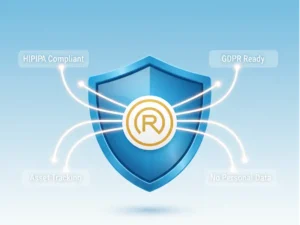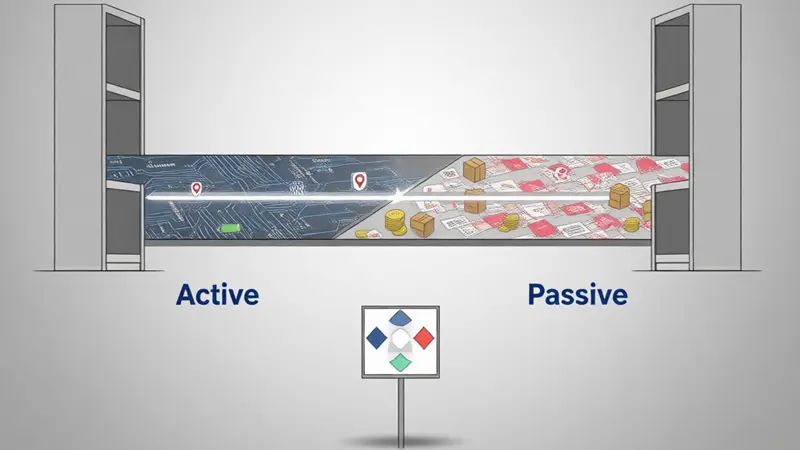
RFID Active vs Passive: Which Is Right for Your Business? (2025 Guide)
Custom Your RFID Cards
Adopting RFID technology is often the first step toward automation and end-to-end asset visibility. But before you deploy a single tag, you face your most critical decision: Should you go with Active or Passive RFID? Let’s cut through the jargon with a simple analogy:
- Active RFID is like a lighthouse: It has its own power source (a battery) and actively broadcasts its signal—constantly, independently, and over long distances.
- Passive RFID is like a mirror: It has no internal power. Instead, it waits for a reader’s signal, “wakes up” by harvesting that energy, and reflects its ID back—only when illuminated.
This guide will help you move beyond technical specs and focus on what truly matters for your business: budget, read range, and operational environment. By the end, you’ll know exactly which technology aligns with your goals.
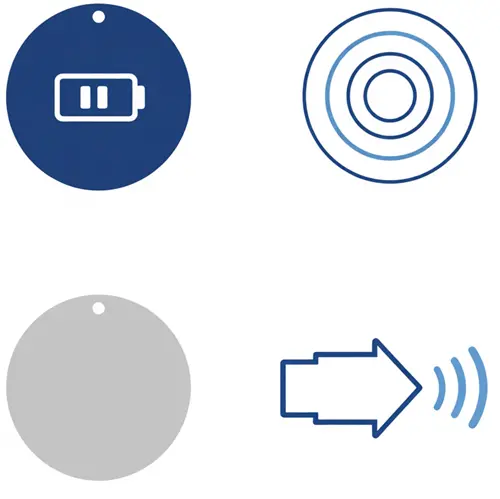
What Is Active RFID?
How It Works
Active RFID tags contain an internal battery that powers both the chip and a built-in transmitter. This allows them to continuously emit radio signals—no external trigger required.
Key Advantages
✅ Long Read Range – The standout feature. Signals can be detected from 100–150 meters, even through walls or outdoors. Ideal for large-scale tracking.
✅ Real-Time Location Systems (RTLS) – Because tags broadcast constantly, they enable true real-time tracking—think “live GPS for indoor assets.”
✅ Onboard Sensors & Data Logging – Battery power supports integrated sensors (temperature, humidity, shock, light), making them perfect for cold-chain logistics, pharmaceuticals, or high-value equipment monitoring.
Key Trade-Offs
⚠️ High Cost – Tags typically range from $5 to $50+ each—not feasible for low-margin, high-volume use cases.
⚠️ Limited Lifespan – Battery life is finite (usually 3–5 years), after which tags must be replaced—adding lifecycle maintenance.
⚠️ Larger Size – Housing a battery and transmitter means bulkier form factors—not ideal for embedding in small or lightweight items.
What Is Passive RFID?
How It Works
Passive RFID tags have no battery. Instead, they harvest energy from the RFID reader’s electromagnetic field—a process called backscatter. Once powered, they reflect their unique ID back to the reader.
Key Advantages
✅ Ultra-Low Cost – This is the game-changer. Tags can cost just a few cents (especially in bulk), enabling mass deployment—even for disposable or single-use applications.
✅ Virtually Unlimited Lifespan – With no battery to degrade, passive tags can last 20+ years, limited only by physical wear or damage.
✅ Compact & Flexible Form Factors – Available as thin inlays, adhesive labels, or embeddable chips—ideal for retail tags, smart packaging, or ID cards.
Key Trade-Offs
⚠️ Limited Read Range – Distance depends on reader power, antenna design, and environment. Typically ranges from a few centimeters to ~20 meters (with UHF).
⚠️ No True Real-Time Tracking – Tags only respond when interrogated. You know an item’s location at the checkpoint—not continuously. Think “scan-and-go,” not “live map.”
⚠️ Environmentally Sensitive – Standard passive tags struggle near metal or liquids (e.g., water bottles, machinery). Specialized on-metal or water-tolerant tags are required in these cases—but they cost more.
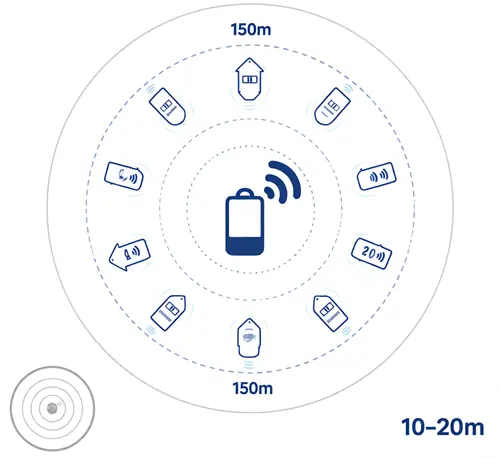
Not All Passive RFID Is the Same
As mentioned, passive RFID’s performance varies significantly by frequency. There are three main types, each suited to distinct use cases:
| Frequency | Read Range | Key Feature | Common Uses |
|---|---|---|---|
| LF (Low Frequency) | <10 cm | Penetrates water & metal well | Animal ID, car key fobs, access control |
| HF (High Frequency) | <1 m | Reliable short-range; supports NFC | Contactless payments, library books, smart cards |
| UHF (Ultra-High Frequency) | Up to 10–20 m | Fast, long-range, bulk-reading | Retail inventory, warehouse logistics, pallet tracking |
💡 View: “LF vs. HF vs. UHF: The Ultimate Frequency Guide” — Learn how to match the right frequency to your environment, material, and workflow.
Head-to-Head: Active vs. Passive Quick Decision Table
| Feature | Active RFID | Passive RFID |
|---|---|---|
| Power Source | Internal battery | Powered by reader (backscatter) |
| Read Range | Up to 150 m | Centimeters to ~20 m (UHF) |
| Tag Cost | $5 – $50+ | $0.05 – $1 (bulk discounts available) |
| Tag Lifespan | 3–5 years (battery-limited) | 20+ years (no battery) |
| Best For | RTLS, high-value assets, sensor monitoring | Inventory, access control, supply chain, mass tagging |
| Metal/Liquid Resistance | High (robust signal) | Low (requires specialized tags) |
| Deployment Scale | Hundreds to thousands | Thousands to millions |
The 4 Key Questions to Guide Your Decision
Ask yourself these business-focused questions, not technical ones to determine the right fit:
🔹 1. What’s your budget?
→ Choose Passive if you need to track thousands of low-cost items (e.g., apparel, documents, library books).
→ Choose Active if you’re protecting high-value, mission-critical assets (e.g., MRI machines, shipping containers, aerospace tools) where real-time insight justifies a $20+ tag.
🔹 2. How far do you need to read?
→ Choose Passive for checkpoint-based workflows (e.g., warehouse dock doors, retail exits, handheld scans <10 m).
→ Choose Active for wide-area coverage (e.g., airport tarmacs, outdoor yards, large factories) where automation and long-range detection are essential.
🔹 3. What’s your tracking goal: real-time location or point-in-time verification?
→ Choose Passive for inventory counts, access control, event timing (e.g., marathon bibs), or shipment verification—scenarios where “Did it pass here?” is enough.
→ Choose Active for RTLS, when you need to see assets live on a dashboard (e.g., locating wheelchairs in a hospital, monitoring forklifts on a factory floor).
🔹 4. What’s your operating environment?
→ Choose Passive for standard indoor settings (retail, offices, dry warehouses). For metal/liquid-rich areas (e.g., automotive plants, food processing), budget for specialized passive tags.
→ Choose Active for harsh, dynamic, or outdoor environments—its stronger signal is more resilient around interference and requires fewer infrastructure adjustments.
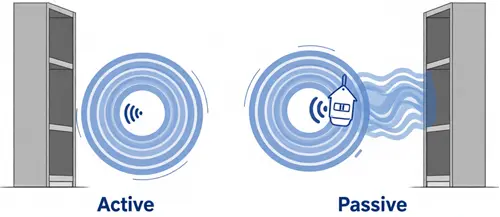
Conclusion
RFID isn’t one-size-fits-all.
- Active RFID delivers performance: long range, real-time data, and environmental robustness—at a premium cost and maintenance overhead.
- Passive RFID delivers scale: unmatched affordability, longevity, and simplicity—for applications where checkpoint visibility is sufficient.
✅ The smartest deployments often use both: passive tags for high-volume inventory plus active beacons for critical mobile assets.


